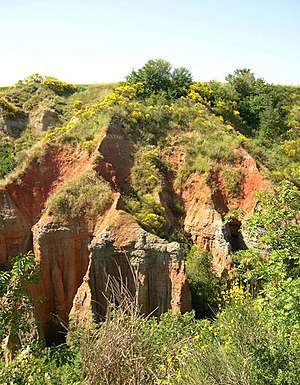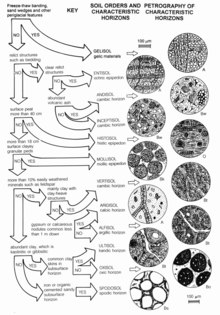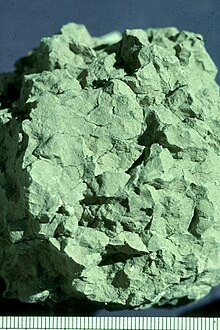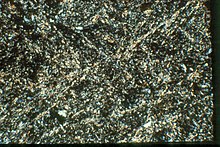Paleosol
Such soils are found within extremely old continental cratons, or in small scattered locations in outliers of other ancient rock domains.Ecological studies have shown that this has forced highly specialised evolution amongst Australian flora[3] to obtain minimal nutrient supplies.Geology, biology, and the atmosphere all changed significantly over that time, with dramatic shifts at the Great Oxidation Event (2.42 billion years ago) and during the Paleozoic, when complex animals and land plants proliferated.While modern soil orders are often used to describe paleosols in a qualitative sense, a paleosol-specific naming scheme has been proposed,[5] although it is only used sporadically in the literature.Until a paleosol-specific naming scheme is fully adopted, many paleo-pedologists have stuck to using the taxonomic classification of soils provided by the United States Department of Agriculture (USDA).Most are found on young geomorphic surfaces such as flood plains and on steep slopes where erosion removes material as the soil forms.The leaching or formation of gley minerals (pyrite or siderite) overprinting prior soil or sedimentary features is associated with peat accumulation.Displays opaque cements that form distinctive radially cracked, concretionary rims to abundant quartz grains in thin sections.Found principally in humid climates in which clay and soluble salts are dissolved and washed out of the profile and most common in temperate regions.If lacking in carbonate nodules, Alfisols can be distinguished by the abundance of base rich clays or by molecular weathering ratios of alumina/bases of less than 2.Form mostly on older parts of landscapes, such as rolling hills of bedrock, high alluvial terraces, and plateau tops.The surface horizon characteristic of this paleosol is created by fine root systems of grassy vegetation and the burrowing activity of many soil invertebrate species.Mean annual precipitation (MAP) and air temperature (MAAT) are two commonly-reconstructed variables which, along with seasonality and in conjunction with other paleoenvironmental tools, can be used to describe past terrestrial climates.A suite of paleoclimatic proxies exist and while they vary in focus, many rely on changes in chemical composition throughout a soil profile that occur during weathering, burial, and post-burial processes.Most proxies are applicable to Phanerozoic paleosols (not older), as landscape processes changed dramatically after the rise of land plants.Paleosols are an important archive of information about ancient ecosystems and various components of fossil soils can be used to study past plant life.[18] Over long geological time scales, phytoliths may not necessarily be preserved in paleosols due to ability of the poorly crystalline silica to dissolve.[19] Other methods for detecting past plant life in paleosols are based on identifying the remains of leaf waxes, which are slow to break down in soils over time.






San Salvador IslandPleistocenegeoscienceGreat BritainAustraliageologypaleontologysoil sciencesedimentsalluviumvolcanic ashlithifiedQuaternarysedimentologypaleoclimatologycratonsclimaterainforestsavannaoxisolsultisolsalfisolsparent materialpodsolstemperate rainforestsouthern AfricaMesozoicPaleoceneinfertile soilsphosphorusnutrientsoil formationbiodiversitycompetitionPrecambrianGreat Oxidation EventPaleozoicpedologistsclassification of soilsUSDA soil taxonomybedrocklithologydisturbed groundmetasomatismsoil orderatmospheresoil carboncarbon dioxideoxygenmethanepollenphytolithssilicacarbon isotopic signatureisotopesC3 photosynthesisC4 photosynthesisleaf waxespaleoseismologyPaleopedologyPaleopedological recordPedogenesisPedology (soil study)Retallack, G.J.BibcodeRetallack, Gregory J.Soil classificationWorld Reference Base for Soil ResourcesAcrisolsAlisolsAndosolsAnthrosolsArenosolsCalcisolsCambisolsChernozemCryosolsDurisolsFerralsolsFluvisolsGleysolsGypsisolsHistosolKastanozemsLeptosolsLixisolsLuvisolsNitisolsPhaeozemsPlanosolsPlinthosolsPodzolsRegosolsRetisolsSolonchaksSolonetzStagnosolTechnosolsUmbrisolsVertisolsAndisolsAridisolsEntisolsGelisolsHistosolsInceptisolsMollisolsSpodosolsFAO soil classificationUnified Soil Classification SystemAASHTO Soil Classification SystemRéférentiel pédologiqueCanadian system of soil classificationAustralian Soil ClassificationPolish Soil Classification1938 USDA soil taxonomyList of U.S. state soilsList of vineyard soil typesTopsoilSubsoilSoil crustClaypanHardpanGypcrustCalichePedosphere